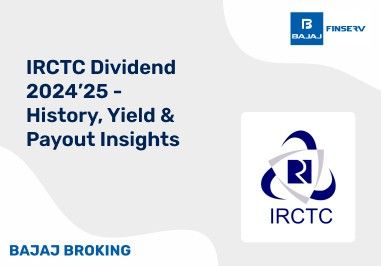BAJAJ BROKING
Tankup Engineers IPO is Open!
Open a Free Demat Account
Trade Now, Pay Later with up to 4x
Track Market Movers Instantly
How To Reactivate Your Trading Account
A trading account serves as the entry point into the world of financial markets, allowing you to buy, sell, and trade various financial instruments such as stocks, bonds, commodities, or currencies. However, sometimes these accounts can become inactive due to a variety of reasons.
Read on to explore how to reactivate a trading account, including the reasons behind its inactivity, the downsides of leaving it dormant, and the benefits of reactivation. So, whether you are a beginner or a seasoned trader, this guide will offer you valuable insights on how to reactivate your trading account.
Reasons for Inactivity
Trading accounts can become inactive for various reasons. Some common factors include:
- Lack of Activity: If a trader ceases to make transactions or engage in trading activities for an extended period, the account may become inactive.
- Administrative Inactivity: In some cases, trading accounts become inactive due to administrative reasons, such as incomplete documentation, changes in personal information, or outdated contact details.
- Regulatory Compliance: Regulatory requirements, such as Know Your Customer (KYC) guidelines, may necessitate periodic updates or reactivation of trading accounts.
Downsides of Inactive Trading Accounts
Leaving a trading account inactive can have certain drawbacks. Here are the common drawbacks of an inactive trading account:
- Missed Opportunities: Inactive accounts may result in missed investment opportunities, as the trader is unable to seize favourable market conditions or capitalise on potential profit-making trades.
- Accumulation of Fees: Some brokerage firms impose inactivity fees on dormant accounts. These fees can erode the account’s value over time.
- Lack of Portfolio Growth: Inactive accounts do not contribute to the growth of a trader’s investment portfolio. A reactivated trading account is essential to resume investing and take advantage of potential market growth.
Why Should You Reactivate Your Trading Account?
Reactivating your trading account can have several benefits:
- Regaining Market Access: Reactivating the account ensures that you regain access to the financial markets, enabling you to participate in trading activities and take advantage of investment opportunities.
- Portfolio Diversification: Reactivation allows you to diversify your investment portfolio, spreading risk across various assets and potentially enhancing returns.
- Revisiting Trading Strategies: Reactivating the account provides an opportunity to review and refine trading strategies, adjusting them based on new market dynamics and personal investment goals.
How to Reactivate Your Trading Account
To reactivate your trading account, you will have to follow these general steps:
- Contact Your Brokerage Firm: Reach out to your brokerage firm’s customer support or account manager to inquire about the reactivation process. They will guide you through the necessary steps and provide the required forms or documentation.
- Complete Required Documentation: Fill out any reactivation forms or update your account information as per the brokerage firm’s instructions. Ensure that all necessary documents are provided accurately.
- Address Compliance Requirements: If there are any outstanding compliance requirements, such as updated identification documents or updated contact information, provide the requested information promptly.
- Review and Sign New Agreements: Depending on the duration of inactivity, you may need to review and sign updated terms and conditions or agreements with the brokerage firm.
- Fund Your Account: If the account balance is insufficient or inactive, consider funding your account to reactivate it. Follow the brokerage firm’s guidelines for depositing funds.
- Resume Trading Activities: Once the reactivation process is complete, you can start exploring the financial markets again, executing trades, and managing your investment portfolio.
Do note, while these are the common steps for the reactivation process, the specific steps may vary with each broker’s policies. It is advisable to consult beforehand to avoid any further delays in the process.
Common Challenges Faced During Reactivation
Reactivating a trading account may come with its own set of challenges. Understanding and addressing these challenges can help smoothen the reactivation process. Here are some common hurdles that you may encounter while reactivating your trading account:
- Account Verification: Depending on the duration of inactivity and changes in regulations, you may need to undergo additional verification processes to reactivate your account. This may involve providing updated identification documents or proof of address.
- Account Reinstatement Fees: Some brokerage firms may charge reinstatement fees for reactivating dormant accounts. You should inquire about any applicable fees and factor them into their reactivation plan.
- Technical and Platform Updates: Since the account has become inactive, there may have been updates or changes to the trading platform or software. Traders may need to familiarise themselves with any new features or functionality.
- Market Knowledge Update: If you have been away from the markets for a significant period, you may need to update your knowledge and stay abreast of current market trends, news, and investment strategies.
- Trading Plan Review: Reactivation provides an opportunity to review and update your trading plan. You should assess your risk tolerance, investment goals, and trading strategies to ensure they align with your current financial objectives.
By acknowledging these challenges and taking proactive steps to address them, you can overcome potential obstacles and make the reactivation process more seamless and efficient.
In Summation
Reactivating a trading account is a crucial step for traders and investors who wish to re-engage with financial markets. By understanding the reasons for account inactivity, recognising the downsides of leaving it dormant, and appreciating the benefits of reactivation, you can take the necessary steps to reactivate your account. Following the outlined steps, including contacting the brokerage firm, completing required documentation, addressing compliance requirements, and funding the account, will allow you to resume trading activities and participate in wealth creation opportunities.
Share this article:
Read More Blogs
Disclaimer :
The information on this website is provided on "AS IS" basis. Bajaj Broking (BFSL) does not warrant the accuracy of the information given herein, either expressly or impliedly, for any particular purpose and expressly disclaims any warranties of merchantability or suitability for any particular purpose. While BFSL strives to ensure accuracy, it does not guarantee the completeness, reliability, or timeliness of the information. Users are advised to independently verify details and stay updated with any changes.
The information provided on this website is for general informational purposes only and is subject to change without prior notice. BFSL shall not be responsible for any consequences arising from reliance on the information provided herein and shall not be held responsible for all or any actions that may subsequently result in any loss, damage and or liability. Interest rates, fees, and charges etc., are revised from time to time, for the latest details please refer to our Pricing page.
Neither the information, nor any opinion contained in this website constitutes a solicitation or offer by BFSL or its affiliates to buy or sell any securities, futures, options or other financial instruments or provide any investment advice or service.
BFSL is acting as distributor for non-broking products/ services such as IPO, Mutual Fund, Insurance, PMS, and NPS. These are not Exchange Traded Products. For more details on risk factors, terms and conditions please read the sales brochure carefully before investing.
Investments in the securities market are subject to market risk, read all related documents carefully before investing. This content is for educational purposes only. Securities quoted are exemplary and not recommendatory.
For more disclaimer, check here : https://www.bajajbroking.in/disclaimer
Our Secure Trading Platforms
Level up your stock market experience: Download the Bajaj Broking App for effortless investing and trading













